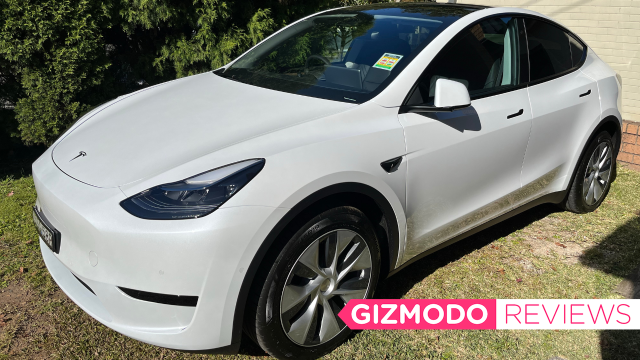It’s Tesla Model Y review time. The Tesla Model Y is probably the most anticipated electric car entering the Australian market this year.
The Model Y has long avoided the Australian market. While it has enjoyed much success overseas, becoming the best-selling Tesla in China and the U.S., the middle-range SUV of the Tesla family is only now making its way down under, more than two years after it originally launched in the U.S..
The first Aussie Tesla Model Ys are hitting the road this year (deliveries will begin from August). Delivery estimates were quickly pushed into 2023 and, just last weekend, the Tesla Model Y price went up. I’m sensing a lot of demand, are you?
One way to think of the Tesla Model Y in Australia is as a product that needs to defend its title, though you may call me a bit dramatic.
While Tesla definitely had the jump in 2020, when the car was released in the U.S., the rest of the market has had time to mature and adapt to electrification. In Australia, where we’re often the last place an EV will go market-wise, the Polestar 2 arrived earlier this year (also originally released in 2020) to directly compete with the Tesla Model 3 (which is now considerably more expensive than the Polestar 2, after price rises). Sure, EV adoption has been slow in Australia, especially compared to other countries, but the cars are already here (some of them anyway).
There are also a fair amount of direct Tesla Model Y competitors here in Australia already, ready to compete, such as the Hyundai Ioniq 5, the Kia EV6 and the Volvo XC40. These are definitely contenders in the electric SUV market that the Tesla Model Y will need to wrestle with. After the Polestar 2’s arrival and immediate success, we’re now confident that EV buyers aren’t guaranteed to only go to Tesla.
This means Tesla is introducing a product into a market where it needs to live up to its name. We can observe other markets and consider Tesla’s grip over EV customers, sure, but as legacy car manufacturers turn away from fossil fuels, Tesla’s argument for itself will need to get stronger.
This is why I’m so glad to have been one of the first Aussie writers to review the Tesla Model Y. This is the big one, the EV that will likely replace the Tesla Model 3 as Australia’s best-selling EV (we’re beginning to see this).
What do I think of it? Well, I think a lot about it. Here’s my Tesla Model Y Review.

The Tesla Model Y
What is it?
The highly anticipated SUV from Tesla, now available for order in Australia
Price
Before onroad costs: $72,300 for the RWD model. $96,700 for the AWD model.
Like
Incredibly spacious, beautiful interior and exterior (including the best rear seat I've ever sat in). A sensible size while retaining SUV spaciousness. A minimalist car with a satisfying range and user interface. Also has a pretty well thought out app.
No like
Its minimalism is often quite annoying. Rear window vision is quite bad. No regenerative braking adjusting. A limited array of cameras for around-car vision.
Y not?
To say it frankly, the Tesla Model Y is a beautiful luxury car. Often seen as “The Tesla Model 3 jacked up”, the Model Y retains the famous Tesla aesthetic without being too massive (like so many SUVs on the road). I love how it looks, obviously going for a mix between minimalism and alienism, trying to look as foreign from your standard road car as possible.
Aesthetics are your choice: I found it to be a sensible design without committing to the cyberpunk edginess of cars like the Kia EV6, but as my Dad likes to complain about its plain, grill-less face, it’s safe to say that it’s not for everyone.
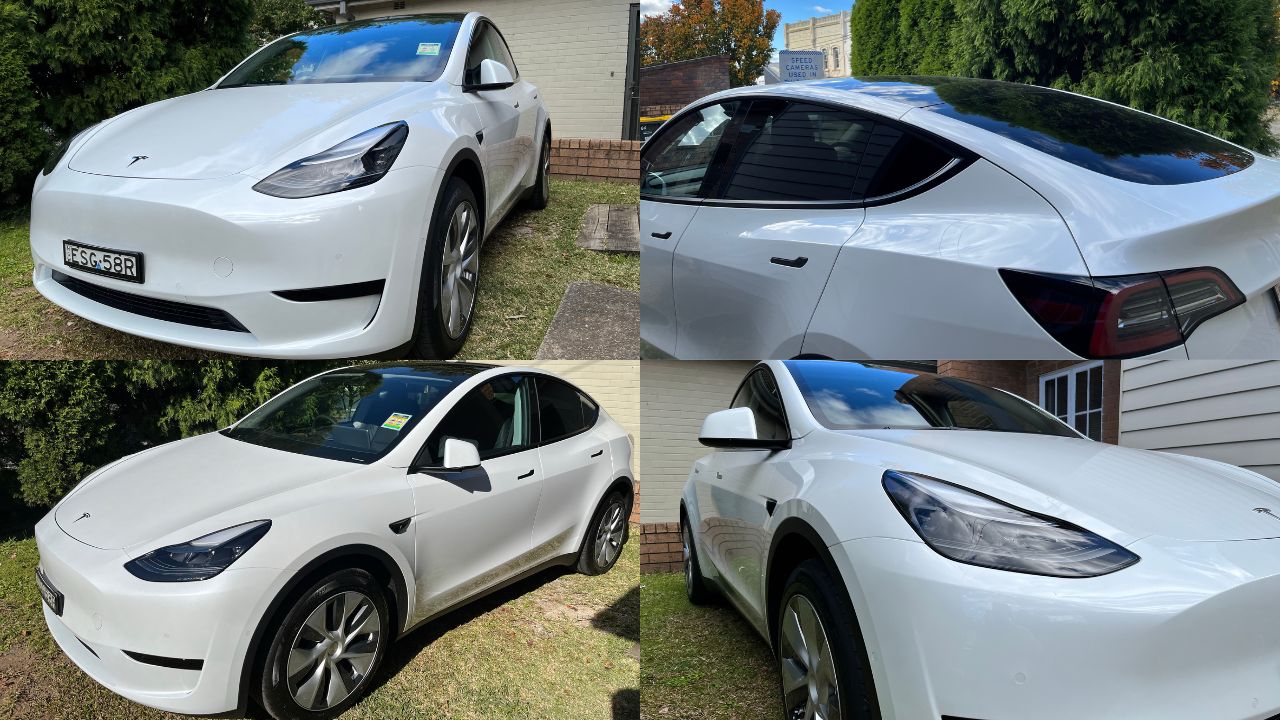
Despite not looking too massive, the Model Y is incredibly spacious.
The frunk is enormous, the boot is gigantic (with spring buttons that push the rear seats down without the need for pushing the seats themselves) and the rear seats have a wealth of space and legroom, enhanced by the spacious effect the moonroof provides. All up, the car is capable of storing 2,158 litres of cargo.
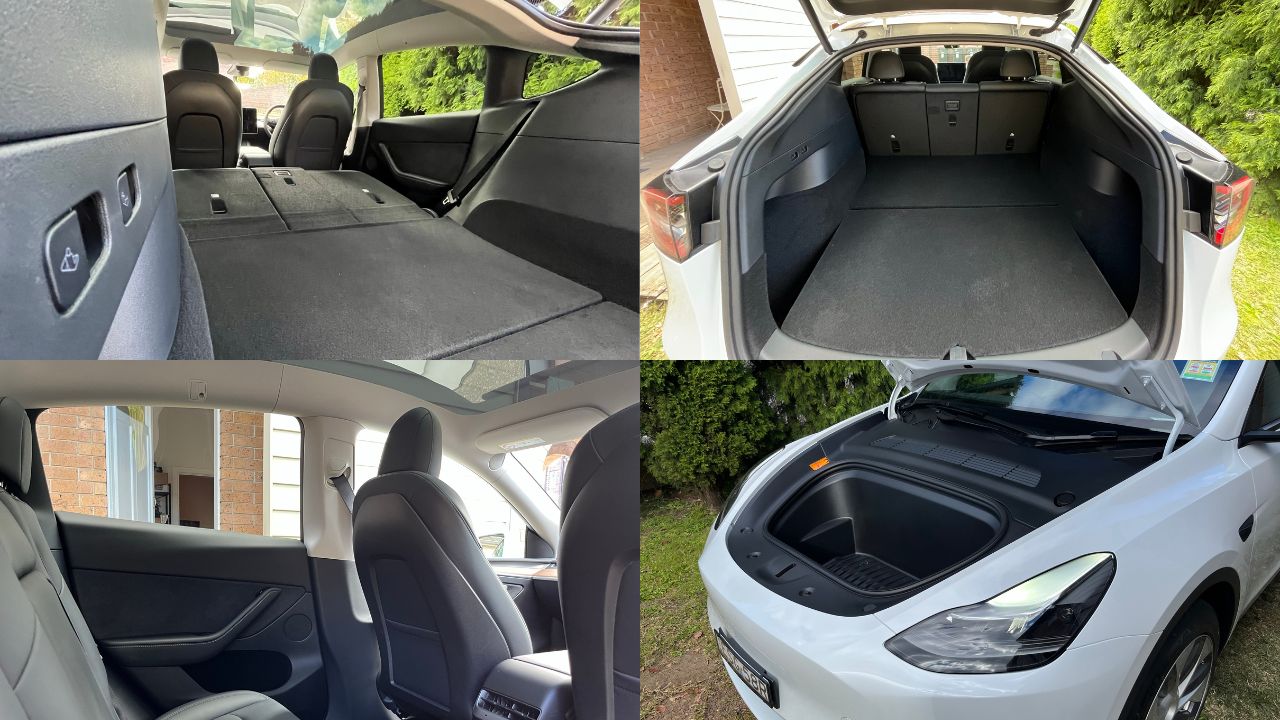
It handles space very sensibly and I don’t think anyone would struggle with this thing being too small. Unless you’re after an American pickup truck.
Additionally, front and cabin visibility ruled, although I was disappointed in rear visibility (more on that later). The sensors were able to detect oncoming objects at great range and overall it felt very safe to drive.
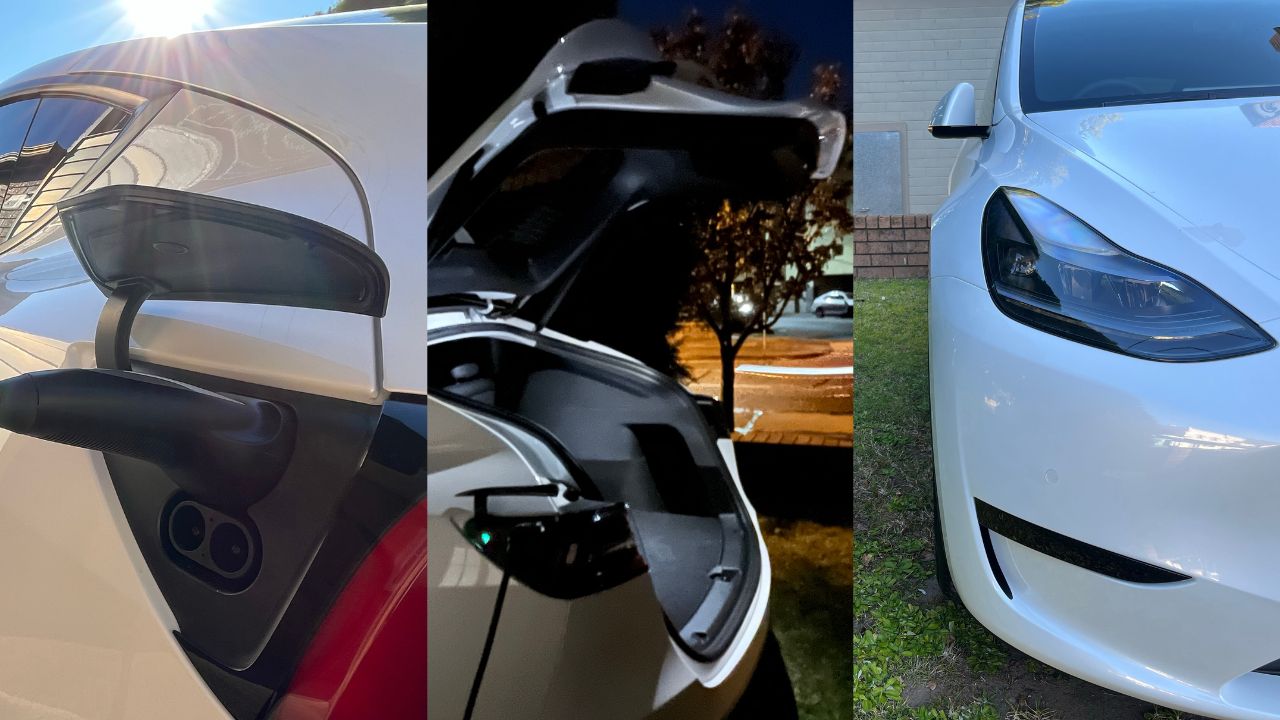
Y worry?
Range anxiety was never a problem in the Tesla Model Y, however, this may be the result of a time bias (I was only given three days with the Model Y, while other cars I’ve reviewed were for a week). That being said, the car had a lot of range to offer.
The RWD model (the one I reviewed) is capable of about 455km range (0-100km/h in 6.9 seconds), whereas the AWD Tesla Model Y Performance model is capable of about 514km range (0-100km/h in 3.7 seconds). In my time with the Model Y, the lowest I had the battery go was 42 per cent, after about three hours of driving (from Sydney to Gosford and back). This charged overnight, up to 87 per cent in the morning after I got home, and 100 per cent after the next night (I drove to the office and back that day).
While I was unable to give the Model Y the same range test as the Polestar 2 and the Kia EV6, I’m pretty comfortable saying that it passes the city commute test. Additionally, if 455km range is anything to believe (and frankly, I see no reason to doubt it), it would probably handle a well-planned highway trek, provided you know which fast chargers you’ll be passing. Additionally, you have access to the Tesla network of superchargers, easily directed to via the in-built maps app.

Something I was very impressed with over others cars was the operating system in the Model Y. As this is the first Tesla I’ve reviewed, it’s the first time I’ve been exposed to Tesla’s proprietary car operating system. It rocks and I never had a problem with it. It’s fast, it displays just enough information and it’s easy to use. The issue I had with the Kia EV6 being overly complicated simply do not exist with the Tesla Model Y.
The phone app is sick, too. Being able to control most of the car’s settings from your smartphone is something that Tesla has got so right (being able to preheat the car before a drive is very cool). You can also set your car as a key and check in on its battery percentage via the app.
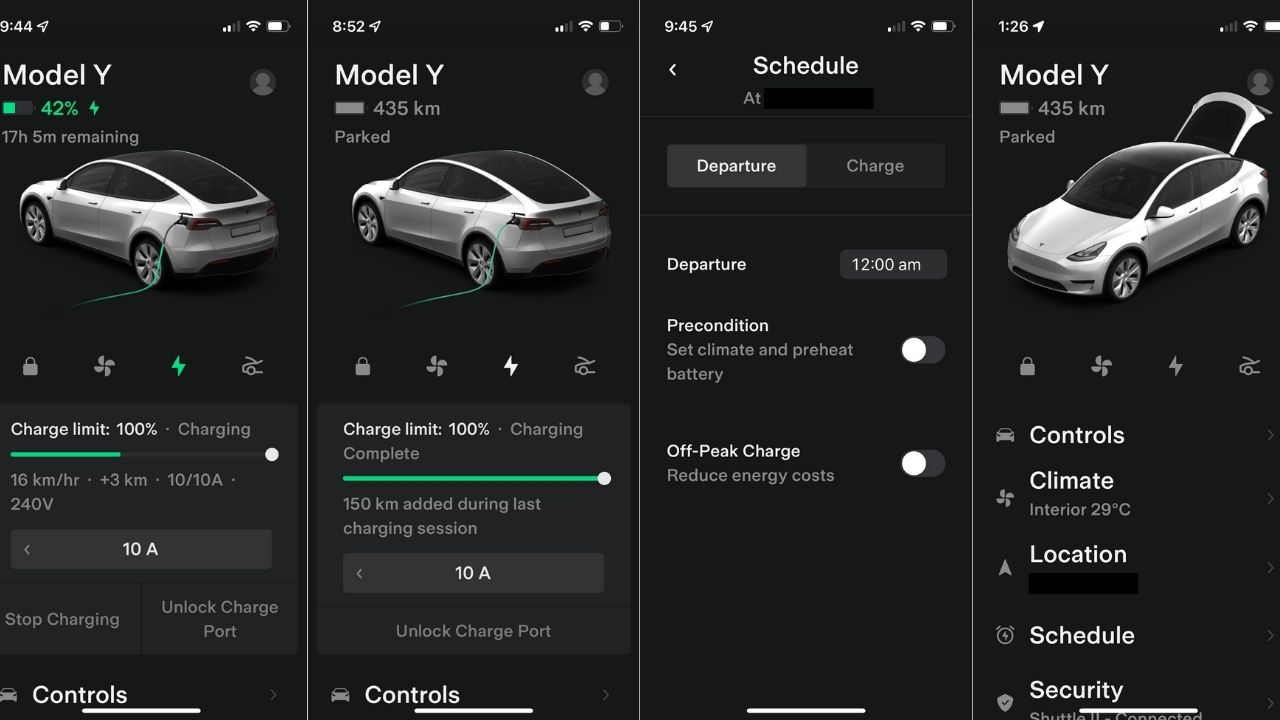
Additionally, it feels very safe and very sleek. The smart cruise control was also quite satisfying, calm in all the right ways without much uncomfortable jank. Autopilot was a nice touch too, but it’s difficult to praise it given my limited time with the car on a highway.
Y though?
In blowing smoke up its metaphorical tailpipe, there’s much to the design that I don’t like. Firstly, the door handles suck. I don’t want to argue with anyone about them, but having to press your thumb in, to then open them reinvents a perfectly good idea, and it’s not for the best.
Additionally, as sensible as this thing is with space, its rear window is not great. It’s tiny, actually. If a car were five metres behind me at night time, I wouldn’t be able to see its headlights, simply because of how small the rear window is. It doesn’t show enough, in my opinion. An argument may be waged over this, considering the Model Y includes a fairly sensible rear camera. However, I think having your eyes in two different spots is actually bad. Again, an example of fixing something that isn’t broken.

For the moment, I’ll also entertain an attack on Tesla’s minimalism, though most of it is personal preference. Additionally, keep in mind that this is the first Tesla I’ve reviewed, so it’s my first time coming into contact with Tesla norms.
I’m a big fan of the recent pivot in popular car design from a destination-based philosophy (getting somewhere quickly and efficiently) to experience-based philosophy (how it feels to be in the car). However, I think the Model Y cranks the wheel a bit much.
Everything is on the centre console, an iPad-shaped (15-inch!) infotainment system. This includes speed (in the top right corner), maps (the default application), car settings and any apps you may want to open (some apps, like streaming services, may only be opened when the car is stationary). This is all fast, although it’s disorienting to not have any readouts behind the steering wheel.
This means your eyes need to be on the road, switching between the windscreen and the infotainment screen quite often. This isn’t an egregious problem but, having reviewed the Polestar 2, I know that there’s a sensible way to meet old and new design halfway. I may have been satisfied with a small, additional screen behind the steering wheel that displayed speed information.
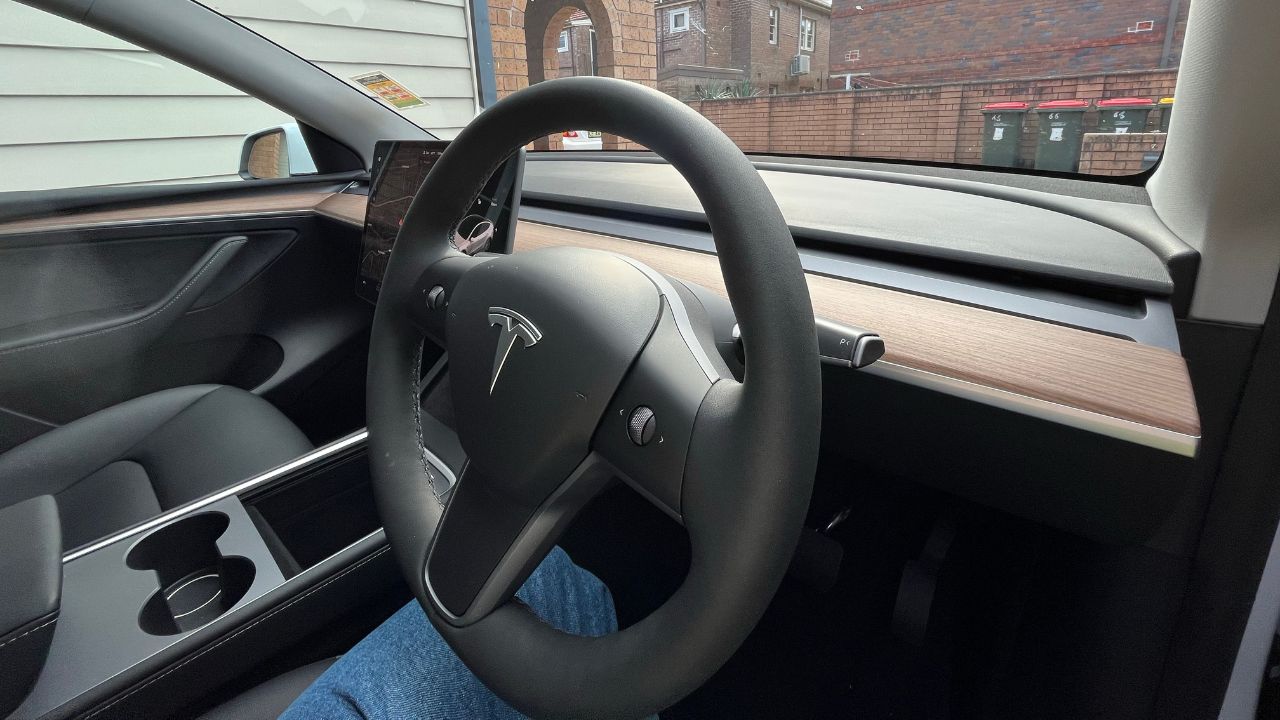
The minimalism problems go beyond the infotainment system. Physical interaction buttons are limited in the car, with two on the wheel (which mostly control infotainment and cruise speed settings) and the levers behind the wheel. All of these are multi-function: for example, the right lever doubles as the cruise control action (bring it down while driving and it’ll flick into cruise) and the gear shift (up for reverse, down for drive). Bring it down twice while driving, and you’ll activate autopilot (hands on the wheel at all times, it’s not perfect).
I don’t like this. In my mind, these should be separate, and as much as I am confident that you could get used to this, I’d be worried that this positioning could lead to an accident. The left lever doubles as a control for the blinkers and front window cleaning.
Additionally, while the regenerative braking was satisfying and working well (from what I could tell), the car lacks regenerative braking adjustment. Tesla removed this functionality a while back, but it has remained an option on other EVs (the Kia EV6 actually offered regenerative braking adjustment with a wheel pedal adjuster).
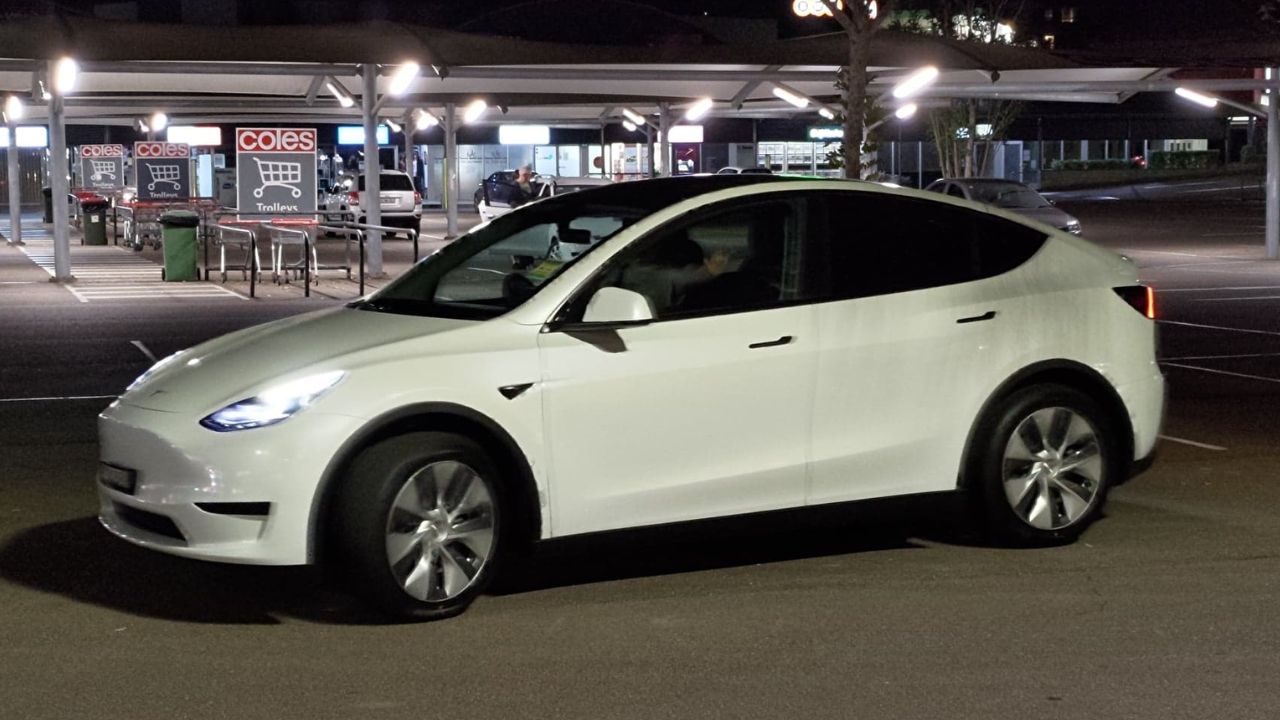
Y buy?
The Tesla Model Y is a compelling EV from the most successful electric-only car company. That said, I’m not totally convinced it would be perfect for most prospective EV buyers.
Economical arguments can be tossed aside, as there’s not a rebate in the country that applies to the Model Y (some stamp duty offers are available), but perhaps this is one of the more attractive electric SUVs based on carrying capacity and range.
The way it handles its space and size is very sensible, definitely providing the spaciousness you’d expect from the SUV subcategory. The range on offer is also quite terrific, besting most of its direct competitors. Additionally, it often feels quite luxurious inside and to drive.
But it’s not perfect. You’d save about $7,000 by buying the Tesla Model 3, and about $10,000 by buying the Polestar 2. If you don’t care for size, then the Tesla Model Y isn’t the car for you.
Additionally, it might be a bit too minimalist for some buyers. It reeks of Apple-esque design, where less is more and more is bad.
Were you to weigh this against its closest competitors, being the Kia Niro Sport and the Volvo XC40, I’d encourage you to think about what’s important in a car beyond size, price and range.
It may even be worth considering the BMW iX1 if you want a more classic-looking interior, and you simply can’t ignore the Hyundai Ioniq 5 and Kia EV6
In review, the Tesla Model Y wants you to believe it’s smarter than the competition, but the competition has had time to grow up since 2020.
Want more Aussie car news? Here’s every EV we’ve reviewed in the last two years, all the EVs we can expect down under soon, and our guide to finding EV chargers across the country. Check out our dedicated Cars tab for more.
